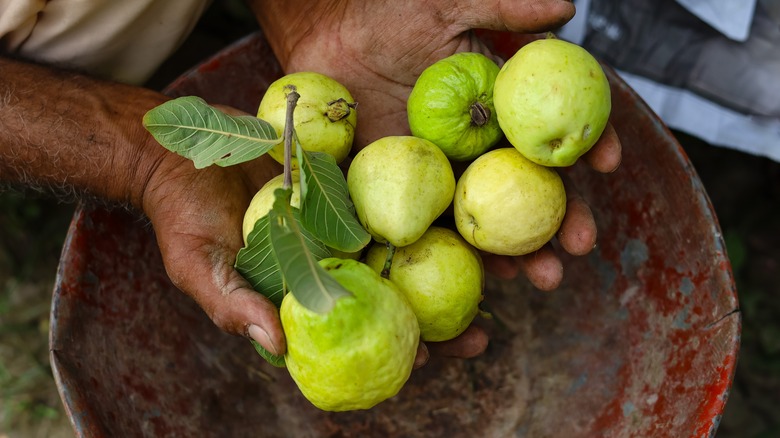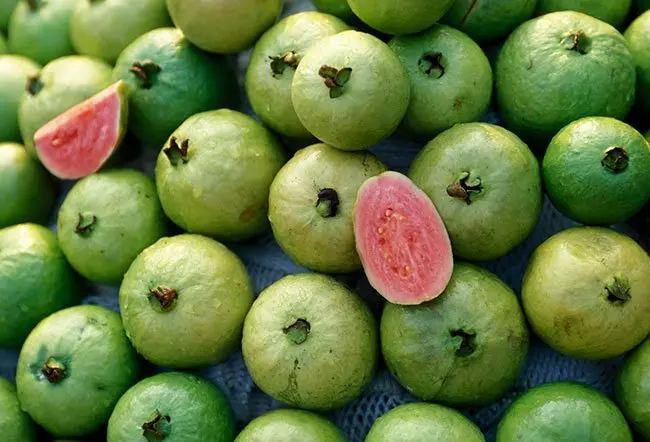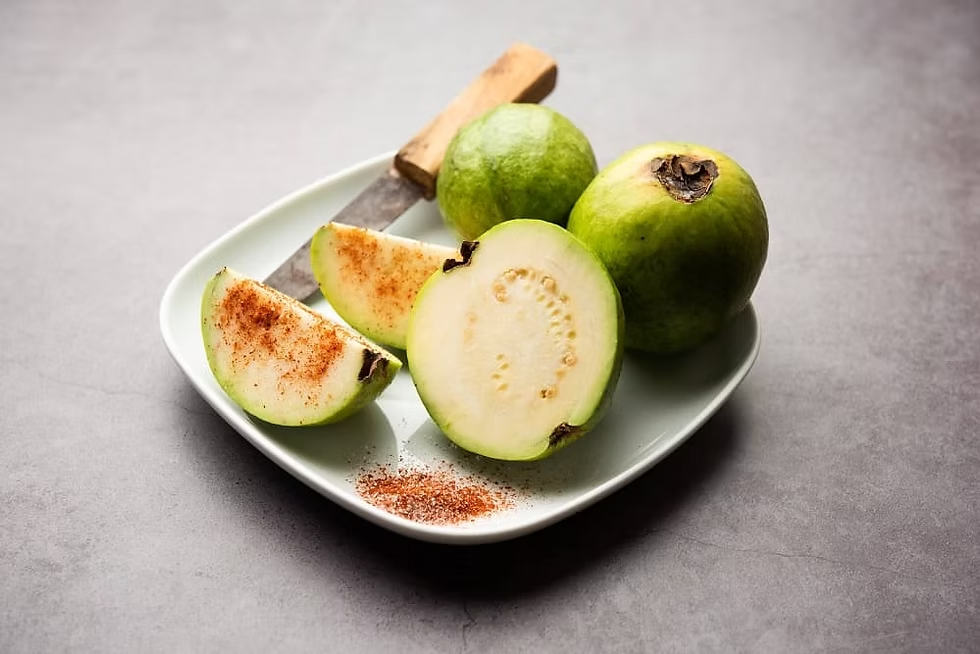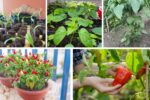Guavas are one of the most beloved tropical fruits worldwide, known for their sweet aroma, juicy flesh, and remarkable nutritional value. Rich in vitamin C, fiber, antioxidants, and minerals, guavas have long been a staple in tropical countries, enjoyed fresh, juiced, or transformed into jams, jellies, and desserts.
As global demand for guavas continues to grow — thanks to rising health awareness and the popularity of exotic fruit flavors — a handful of countries stand out as the world’s largest producers. In this article, we’ll explore the top 5 guava-producing countries in the world, examining what makes them leaders in guava cultivation and how they contribute to the global market.
A Global Snapshot of Guava Production

Guavas (Psidium guajava) flourish in warm, tropical and subtropical regions with plenty of sunshine, well-drained soils, and minimal frost. Today, guavas are grown across Asia, South America, and Africa, with a handful of countries producing the majority of the global supply.
According to recent reports from the Food and Agriculture Organization (FAO), global guava production exceeds 55 million metric tons per year, with the top 5 countries contributing nearly 75% of the total.
Top 5 Guava Producing Countries in the World
Let’s explore the top guava-producing nations, their impressive production numbers, major growing regions, and why they’ve become guava powerhouses.
1 India — The World’s Largest Guava Producer

Annual Production: Over 25 million metric tons
Global Share: Approximately 45-50%
When it comes to guava farming, India is in a league of its own. The country produces more guavas than the next four countries combined, earning it the undisputed title of Guava Capital of the World.
Why India Leads:
- Ideal climate and fertile soils across vast parts of the country.
- Guava grows in almost every Indian state, with major production hubs in Uttar Pradesh (UP), Maharashtra, Bihar, Madhya Pradesh, and Tamil Nadu.
- A wide range of guava varieties including Allahabad Safeda, Lucknow-49 (L-49), Pink Guava, Chittidar, and Arka Mridula.
- Guava is a key component in India’s fresh fruit markets, processing industries (juices, jams, candies), and traditional medicine.
Fun Fact:
Uttar Pradesh alone contributes 30-35% of India’s guava output and is home to the famous Allahabad guava, renowned for its sweetness and aroma.
2 China — Asia’s Second-Largest Guava Producer
Annual Production: Around 5.5 million metric tons
Global Share: About 10%
While China may be better known for other fruits like apples and citrus, it’s also one of the world’s top guava producers. The fruit is widely grown in southern China, especially in Guangxi, Guangdong, Yunnan, and Hainan provinces.
Highlights:
- China cultivates both white and pink-fleshed guava varieties.
- Guavas are primarily consumed domestically, often enjoyed fresh or as juices, preserves, and herbal teas.
- The country is developing new high-yield, disease-resistant guava cultivars through modern agricultural research.
3 Indonesia — Southeast Asia’s Guava Powerhouse

Annual Production: Approximately 3.2 million metric tons
Global Share: About 6%
Indonesia has rapidly grown into one of the top guava producers in the world. Thanks to its tropical climate, fertile soils, and vast agricultural lands, guava thrives throughout the country.
Key Growing Regions:
- West Java
- Central Java
- Sumatra
- East Java
Why Indonesia Stands Out:
- Guava is an everyday fruit in Indonesian homes, often eaten fresh or made into traditional beverages like es guava (guava iced drink).
- The country grows popular varieties like Jambu Biji Merah (Red Guava) and White Guava.
- Indonesia is expanding its guava processing industry, producing guava juice, jams, and dried snacks for domestic and regional markets.
4 Brazil — South America’s Guava Giant
Annual Production: Around 2.5 million metric tons
Global Share: Roughly 4.5%
As South America’s largest guava producer, Brazil has a rich tradition of guava cultivation. The fruit is widely grown in the country’s tropical and subtropical zones, particularly in:
- São Paulo
- Minas Gerais
- Bahia
- Paraná
Highlights:
- Brazil is famous for its iconic sweet treat, goiabada (guava paste), and guava jellies.
- Guavas are a staple in Brazilian homes, markets, and restaurants.
- The country cultivates popular varieties like Paluma and Sassaoka.
Interesting Fact:
Brazil exports a portion of its guava products, particularly guava paste and guava juice, to the United States, Portugal, and other Latin American countries.
5 Thailand — A Tropical Fruit Haven

Annual Production: About 2.1 million metric tons
Global Share: Around 3.8%
Thailand rounds out the top five, with guava cultivation spread across its tropical heartland. Known locally as farang, guava is a favorite street snack, often sold with a sprinkle of chili salt.
Key Growing Areas:
- Ratchaburi
- Nakhon Pathom
- Phetchaburi
Why Thailand Excels:
- Guavas are grown year-round thanks to Thailand’s favorable climate.
- Thai guavas are known for their crisp texture and balanced sweetness.
- The country exports guavas, guava juice, and dried guava snacks to regional and global markets, including China, Hong Kong, Malaysia, and the Middle East.
Global Guava Production Recap (Annual Metric Tons)
| Rank | Country | Production (Million Metric Tons) |
|---|---|---|
| 1 | India | 25+ |
| 2 | China | 5.5 |
| 3 | Indonesia | 3.2 |
| 4 | Brazil | 2.5 |
| 5 | Thailand | 2.1 |
(Source: FAO, 2023)
Why Guava Demand is Growing Globally

The global guava market is on the rise, driven by several factors:
- Health trends favoring natural, vitamin C-rich, fiber-packed superfruits.
- The growing use of guava in processed products like juices, jams, candies, and snacks.
- Increasing demand for tropical and exotic fruits in North America, Europe, and the Middle East.
- Guava’s popularity in natural medicine and skincare products due to its high antioxidant content.
Sustainability in Guava Farming
As guava production expands, many top-producing countries are embracing sustainable practices:
- Organic guava farming is gaining ground in India, Brazil, and Thailand.
- Efforts to improve water-efficient irrigation systems and reduce pesticide use.
- Promoting integrated pest management (IPM) and crop rotation to preserve soil health and biodiversity.
Conclusion
The top 5 guava producing countries in the world — India, China, Indonesia, Brazil, and Thailand — together account for the majority of global guava production.
India leads the charge by a wide margin, contributing nearly half of the world’s guavas, with the others making significant contributions to both domestic markets and international trade.
As global demand for this sweet, nutritious, and versatile fruit continues to grow, these countries will remain essential to the guava trade, ensuring that the world’s markets are stocked with fresh, juicy guavas year-round.





